- Wondering how to get Monopoly GO! free rolls? Well, you’ve come to the right place. In this guide, we provide you with a bunch of tips and tricks to get some free rolls for the hit new mobile game. We’ll …
Best Roblox Horror Games to Play Right Now – Updated Weekly
By Adele Wilson
Our Best Roblox Horror Games guide features the scariest and most creative experiences to play right now on the platform!The BEST Roblox Games of The Week – Games You Need To Play!
By Sho Roberts
Our feature shares our pick for the Best Roblox Games of the week! With our feature, we guarantee you'll find something new to play!Type Soul Clan Rarity Guide – All Legendary And Common Clans Listed!
By Nathan Ball
Wondering what your odds of rolling a particular Clan are? Wonder no more, with my handy Type Soul Clan Rarity guide.
From Insomniac to indie: The invention of ByteSize Games [interview]
Last fall, a new indie studio by the name of ByteSize Games made their debut with a hyper-addictive iOS game called FlipShip. Now only six months later, they’re preparing to launch their second game: Little Labyrinths. But where did this studio come from?
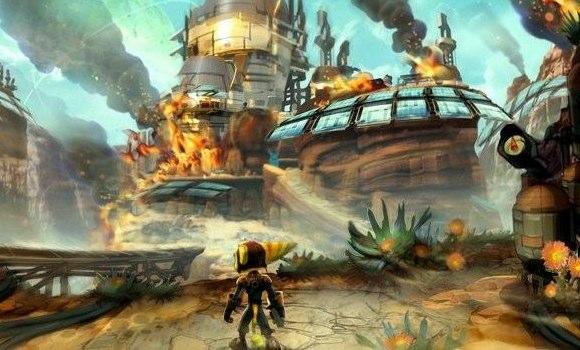
Last fall, a new indie studio by the name of ByteSize Games made their debut with a hyper-addictive iOS game called FlipShip. Now only six months later, they’re preparing to launch their second game: Little Labyrinths. But where did this studio come from?
We recently had a chance to speak with Thomas Hoeg, CEO and co-founder of ByteSize Games, about the birth of their studio, their experiences thus far in the world of self-published gaming, and what’s coming next.
Like a lot of top indie developers, you formed ByteSize Games after leaving a job with a traditional developer – in this case, the famed studio behind the Ratchet & Clank and Resistance franchises, Insomniac Games. Tell us about that journey.
Well, my brother Rick (co-founder of ByteSize) and I had been talking about starting a company together for a while, probably since I went off to college. We didn’t know exactly what it would be, but it usually involved games of some sort. When I was graduating from college with a degree in Mechanical Engineering and no desire to be a mechanical engineer, Rick and I talked about starting a game company then, but it was clear the timing wasn’t right since neither of us knew very much about making, much less selling, games.
Fast forward about four years and I am a graduate of the Guildhall at SMU working at Insomniac on pre-production of their recently-announced project, Overstrike, having just shipped Ratchet & Clank Future: A Crack In Time. Insomniac is a great company with excellent people, and I really enjoyed working there, but I wasn’t doing what I knew I wanted to do, which is design whole games from the ground up. It was clear that it would take me awhile to reach that point though traditional means, so Rick and I again started talking about our company, only this time our conversation was more realistic, more concrete. We were talking about resources and production cycles and it became clear to us this was something we could actually do, and it would only get less likely the longer we waited, so we jumped on it. I think we resolved to create the company around March of 2010, and I had left Insomniac, moved to Michigan, and we founded the company by August of the same year.

Ratchet & Clank Future: A Crack in Time
Since founding the company, it’s become what feels like more of a personal journey as I went from having the monumental resources of a big developer like Insomniac, to relying on myself for almost everything and trying to find ways to do things as cheaply and efficiently as possible. In addition, I’ve had to learn a little bit about pretty much everything associated with game design and running a company, and it’s been an incredible growth experience. I feel like I am learning new things and solving new problems every day, which is exactly what I want to be doing.
Last fall, you made your debut with the release of the color-flipping iOS game FlipShip. How was your first experience as a self-publisher?
Scary? Tense? Exhilarating? I could probably answer this question with a list of the thousand emotions I felt throughout the production of FlipShip, but I’ll try to keep it to just a few. If there’s anything that I think defines the production of FlipShip it’s the old saying, “you don’t know what you don’t know.” I had developed games in school and with big developers like Insomniac and Gearbox, but nothing ever tested me as much as FlipShip. During that production, I was in touch with every part of the development process from initial concept to final release and beyond. I was dealing with a lot of stuff I had only very limited contact with before FlipShip, so there was a lot of time during FlipShip‘s production that was, “oh, how are we going to do that?” This is however, one of the reasons why I love my job so much, and why designers often refer to their games as their babies.
I can see so much of myself in FlipShip, and that has been a fantastic experience. By comparison, the release of a game like Ratchet & Clank: ACIT,while very exciting for me, had a completely different feeling. While I could see the contributions I made to that project, I felt like a small cog in a very large machine. With FlipShip, I was somehow involved with absolutely everything that went into that game, and I watched as it went from an idea in my head, to something on paper, to a real game out in the world. Being such a big part of that is easily one of my favorite parts of the job.
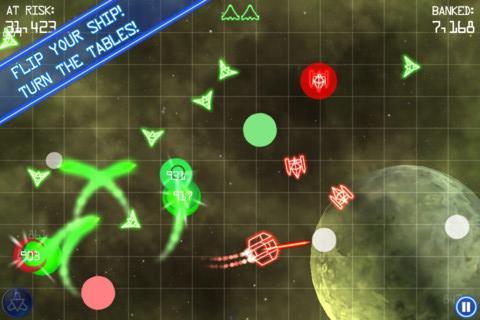
Your brother Richard Hoeg recently described your company’s focus to us as “quick ‘bite-size’ experiences that can be satisfying for all audiences.” Can you elaborate on that a little?
Sure I can. We want to give players an experience that is intrinsically fun, highly replayable, and immediately accessible. In our minds, the mobile space and the mainstream gaming space should cater to very different needs. Mobile gaming is often donein relatively short play sessions with sometimes quite a bit of time between those sessions, so we want players to be able to get in, have fun, and get out, without needing to spend a lot of time learning (or re-learning) how to play the game. At the same time, we want to make sure our experiences are robust enough to stay fun over longer play sessions as well.
The other side of the “ByteSize” coin is the concept of big experiences in small packages. As long-time gamers, we see the wealth of different experiences that gaming has to offer, but many of them are not ideally suited to the mobile platform. We want to take those experiences, distill them down to their base elements and rebuild them for mobile devices so they can find a much wider audience. There area number of near-extinct genres (e.g., old school adventure games, space sims) that Rick and I adore, and we feel that with the right design choices they could find a solid audience in the mobile space.
Are there any bite-sized experiences on the App Store right now that you’re personally enamoured with?
I think my favorite developer, and certainly the one I most want to emulate is Mika Mobile. I always find myself going back to their stuff, and I think it perfectly encapsulates what we would call a bite-sized experience. Each session of gameplay can be as short as five minutes, but they have enough depth and progression that they hold up to longer sessions as well. I am currently playing a good amount of Zombieville 2, but I also go back to Battleheart relatively frequently. They feel like very big experiences that are very easy to get into, and that is exactly what we want to make.
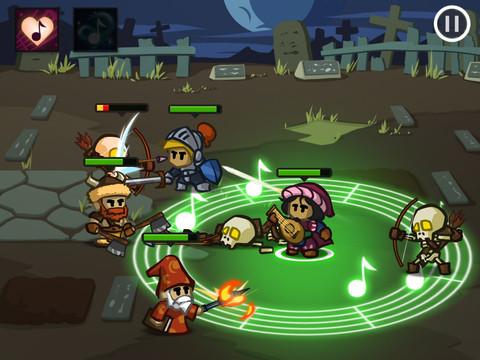
I’ve also been playing a fair bit of an iPad game called Royal Envoy, which is a perfect bite-sized city simulator in my opinion. Each level has some goals for you to achieve like getting a certain amount of money, or happiness, or specific buildings in your town, and each level can be completed in about 5 – 10 minutes. In fact, there’s a timer that gives you a huge bonus for finishing under some target time. Really, the timer is what makes the game since I don’t think there’s any way you can “fail”. It may just take longer.
You’ve recently announced ByteSize Games’ second iOS title, Little Labyrinths, and it looks wildly different from FlipShip. Why the sharp change in direction?
Truth be told, I guess I don’t think of it as a sharp change in direction, but I can see how it looks that way from the outside. When we founded ByteSize we didn’t do it with the intent or pursuing any particular genre or type of game. The same is true of how we come up with our game designs.
The concept can be inspired from a bunch of different sources, and whenever I have an idea I write it down, then when it’s time to come up with a new concept I look over those notes and flesh out a few of my favorite ideas. Once we have a set of concepts to start talking about, we sit down and debate them, and something usually (at least so far) bubbles to the top. In our minds, good is good, and we are always going to pursue what we think are the “best” ideas.
Little Labyrinths was actually inspired by a piece of technology we were developing for a different game, which was the system for creating procedurally-generated dungeons or mazes. Once we finished that system, I pitched Rick an idea for a game that was about solving mazes as fast as you could and we both really liked it. A quick examination of the App Store seemed to indicate that there wasn’t anything quite like it (at least not with much production value), with the closest things being ball rolling games based on the old wooden labyrinth toys, and thus Little Labyrinths was born.
All in all Little Labyrinths is exactly the kind of bite-sized game we want to make, and I think that’s why the whole team (and our families) are really attached to it. It is different in almost every way from FlipShip, but I think it is consistent with the kind of games we want to make.
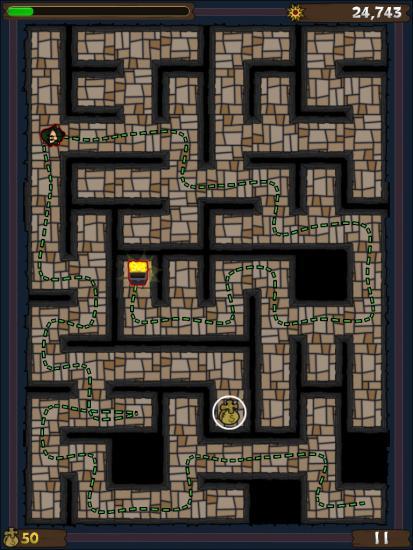
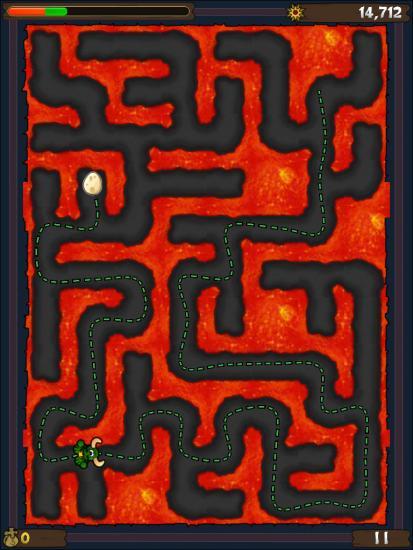
Even though the two games are nothing alike, will fans of FlipShip find something to love here, or would you say these two titles are directed at different audiences?
I think there’s a lot for pretty much anyone to like in Little Labyrinths,including our same dedication to polish and affinity for interesting scoring mechanics. So I thinkFlipShipfans will enjoy it as well as a much larger audience of more casual players. We are very happy with FlipShip as a game and we’ve received a great amount of positive feedback from fans and critics alike, but it’s clear that it was sometimes a difficult game for casual players to get into. With tilt controls requiring a good amount of precision and very little margin for error, the game skewed towards a very competitive, hardcore audience, which adored the game. By comparison, in Little Labyrinths anyone can draw a line and be quite comfortable with it. Even our two and three-year-old daughters love it, though they know it only as the “mouse and cheese” game on Dad’s phone.
With Little Labyrinths, we are keeping the competitive aspects of FlipShip and continuing to reward expertise and skill, but we are also building in more support for new players, and more for all players to achieve. With the currency-based progression system we’ve built, players are constantly progressing towards something, and it’s completely up to the player to decide what that something is. In addition, we have leaderboards that reward skillful play like high scores, but also ones that reward consistent and dedicated play like play time and total mazes solved. Also, the skills tested in Little Labyrinths are equal parts mental and physical which will allow a larger group of players to excel at the game in different ways.
Once Little Labyrinths launches, what’s next for ByteSize Games?
A vacation? 🙂
After that, we’ll be pursuing a few different directions. We are most-definitely planning a lot of post-launch support for Little Labyrinths in the form of monthly content updates. Also we have a lot of different ideas in mind for our next game. Hopefully, Little Labyrinths does well enough that we can grow the team a bit or take on a project with a longer production cycle, so we can review the ideas we set aside as “too big” for our current project. Otherwise, we’ve got plenty of ideas we can develop with just the resources we have on hand.
In either case, we’re hoping to have another ByteSize game available this year. 😀
More articles...
Monopoly GO! Free Rolls – Links For Free Dice
By Glen Fox
Wondering how to get Monopoly GO! free rolls? Well, you’ve come to the right place. In this guide, we provide you with a bunch of tips and tricks to get some free rolls for the hit new mobile game. We’ll …Best Roblox Horror Games to Play Right Now – Updated Weekly
By Adele Wilson
Our Best Roblox Horror Games guide features the scariest and most creative experiences to play right now on the platform!The BEST Roblox Games of The Week – Games You Need To Play!
By Sho Roberts
Our feature shares our pick for the Best Roblox Games of the week! With our feature, we guarantee you'll find something new to play!Type Soul Clan Rarity Guide – All Legendary And Common Clans Listed!
By Nathan Ball
Wondering what your odds of rolling a particular Clan are? Wonder no more, with my handy Type Soul Clan Rarity guide.







